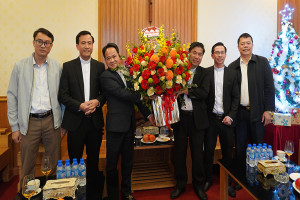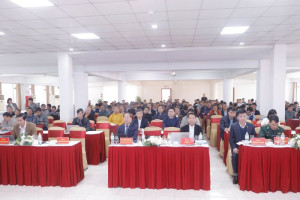
The Dhammayangyi Temple is Bagan's largest. It is said that King Narathu built it to atone for his sins. The king was believed to be extremely cruel - he murdered his father and brother to get his hands on the crown, executed one of his wives, an Indian princess, for sticking to her Hindu beliefs, and killed his builders if he could fit a pin between the bricks of the temple.
After his death, construction of the temple stopped and the debris that filled it is believed to be the work of the builders. Today, the interior of the temple is bricked in - and no one knows why.

The Shwedagon Pagoda houses 8 strands of Gautama Buddha's hair. Myanmar's most sacred Buddhist structure, located in Yangon, houses what is believed to be the hair of Gautama Buddha, who is known to many of us as, Buddha.
Legends have it that two brothers from the city of Balkh (modern-day Afghanistan) met the Lord Gautama Buddha and received eight strands of his hair. The brothers then travelled to Burma and, with the help of the local ruler found Singuttara Hill, where the relics were enshrined. The stupa atop the main dome also has a crown studded with more than 7,000 diamonds and precious stones, and is topped with a 74-carat diamond.

According to legends, the Ananda Temple, a highly revered temple in Bagan, was built based on eight monks' description of the Nandamula Cave Temple in the Himalayas. The king requested the monks to build a temple in the middle of the Bagan plains recreating the cool conditions of the original temple.
After the monks completed the construction, the king, in order to retain the uniqueness of the temple, got the monks killed to ensure that another similar struc would not be built by them anywhere else.

Shwezigon Pagoda's location was determined by a white elephant that was carrying a frontal bone relic of the Buddha. The beast was allowed to roam freely with the declaration that wherever it stopped, the spot would be the site for the temple.

The Pindaya Caves filled with thousands of Buddha statues and images, with some dating back to the early 18th century, the collection gives visitors an insight into the ever evolving artistic sensibilities through the ages.
There is a legend attached to the caves as well and it has to do with the spider sculpture at its entrance. The story goes that seven princesses were trapped in the caves by a spider monster.
A prince passed by and heard their screams. The eldest princess promised him the hand of her youngest sister if he could kill the monster and free them. He succeeded and won himself a princess.

Mount Popa is considered the "Mount Olympus" of Myanmar and as a pilgrimage site is home to numerous nat temples and religious relics. Burmese superstition believes that one should not wear red, black, or green, and bring meat when visiting the mountain.

You will be awed by the sight at Kyaiktiyo - where a small pagoda is perched atop a gilded granite boulder that looks to be balancing precariously on the edge of a hill. A strand of Buddha's hair is said to be enshrined here and it is this hair that is preventing the massive rock from tumbling down the hill. To reach it so that you can affix a gold leaf on the boulder, you must cross a bridge across an abyss. Women, however, are not allowed to touch the rock and are therefore not allowed to cross the bridge.
Source: http://travel.asiaone.com/




